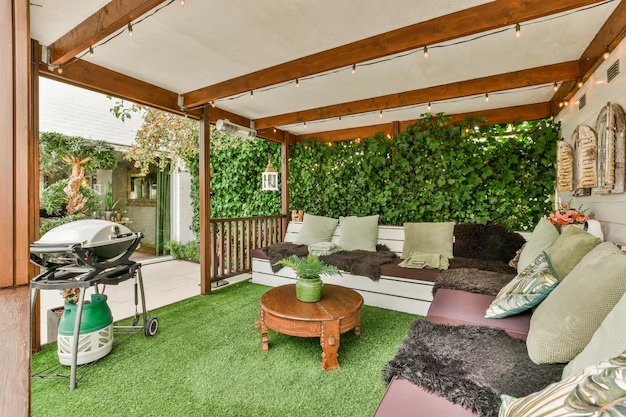Discover the Charm of Garden-Style Apartments
Imagine stepping outside your front door and being greeted by lush green gardens, the scent of blooming flowers, and the sound of birds chirping. This picturesque setting is what many find so appealing about garden-style apartments. But what exactly are they, and how do they differ from other types of living accommodations?
Unpacking the Garden-Style Living
Garden-style apartments are typically low-rise apartment buildings, usually no more than three stories high, that are surrounded by landscaped grounds. Unlike high-rise urban apartments, garden-style complexes emphasize outdoor space, offering residents a closer connection to nature. These complexes are often designed in a U-shaped, clustered, or sprawling layout, allowing for shared gardens and green spaces that create a community-centric ambiance.
The main features that distinct garden-style apartments include:
- Architecture: Typically, these apartments have open breezeways and may not have elevators in buildings of two or three stories. This contributes to their simple, accessible design.
- Outdoor Spaces: Notable for their generous outdoor areas, often including communal garden paths, swimming pools, and barbecue spots.
- Location: Usually found in suburban or residential areas, these apartments provide a retreat-like environment without being far from essential amenities.
Why Choose a Garden-Style Apartment?
There are several reasons why someone might choose to live in a garden-style apartment:
- Community Feel: With shared outdoor areas and often less unit density, these apartments can foster a strong sense of community among residents.
- Tranquility: The emphasis on landscaped grounds provides a peaceful setting, often more serene than the hustle and bustle of the urban center.
- Cost-Effectiveness: Typically, these apartments tend to have lower rents compared to their high-rise urban counterparts which can make them attractive for individuals looking for affordability.
Navigating Financial Assistance for Rental Housing
Securing a home, whether it be a cozy garden-style apartment or any other form, can be a significant financial commitment. For those seeking assistance, understanding the available resources is vital.
For many, government aid programs offer crucial help:
- Section 8 Housing Vouchers: This federal program assists low-income families, the elderly, and disabled individuals in affording safe and clean housing.
- Emergency Rental Assistance Programs (ERAP): These are designed to help renters stay housed in times of crisis, such as during financial hardships.
- Low-Income Home Energy Assistance Program (LIHEAP): Though primarily aimed at energy costs, this program can indirectly benefit tenants by easing overall household expense burdens.
Supplementary Financial Solutions
For those juggling financial challenges beyond housing, other resources can alleviate the strain:
- Credit Counseling Services: These organizations offer guidance on managing debt and improving credit health.
- Debt Relief Options: Programs like debt consolidation or negotiation services can provide relief for overwhelming debts.
- Educational Grants and Scholarships: Returning to school or upgrading your skills can provide long-term financial benefits. Programs like Pell Grants or various scholarships can make education costs more manageable.
Taking advantage of these resources can ease the path to stable housing and financial well-being.
🔹 Quick Resources for Financial Assistance:
- 🏠 Section 8 Housing Vouchers: Helps cover rental costs for eligible participants.
- ⛑️ Emergency Rental Assistance Programs (ERAP): Financial aid during crises to prevent homelessness.
- 💡 LIHEAP: Assists with energy-related utility costs, releasing household budget pressure.
- 💳 Credit Counseling Services: Offers support and strategies for managing debts effectively.
- 📚 Educational Grants & Scholarships: Available for those seeking further education to enhance career prospects.
Whether you're considering a move to a garden-style apartment or navigating the intricacies of financial support, understanding your options empowers you to make informed decisions about your living arrangements and financial future.
